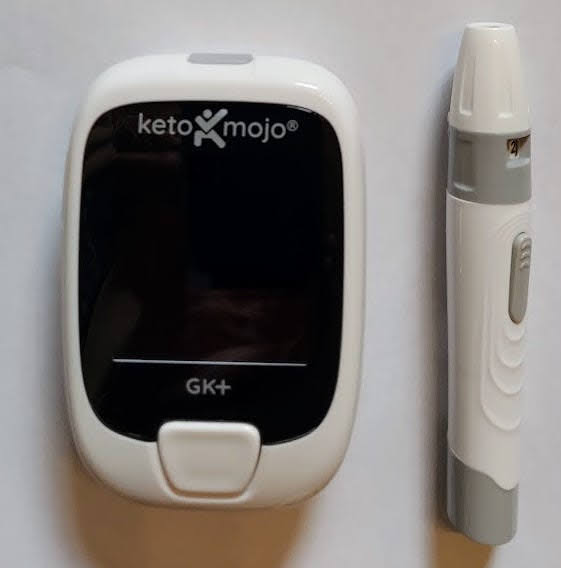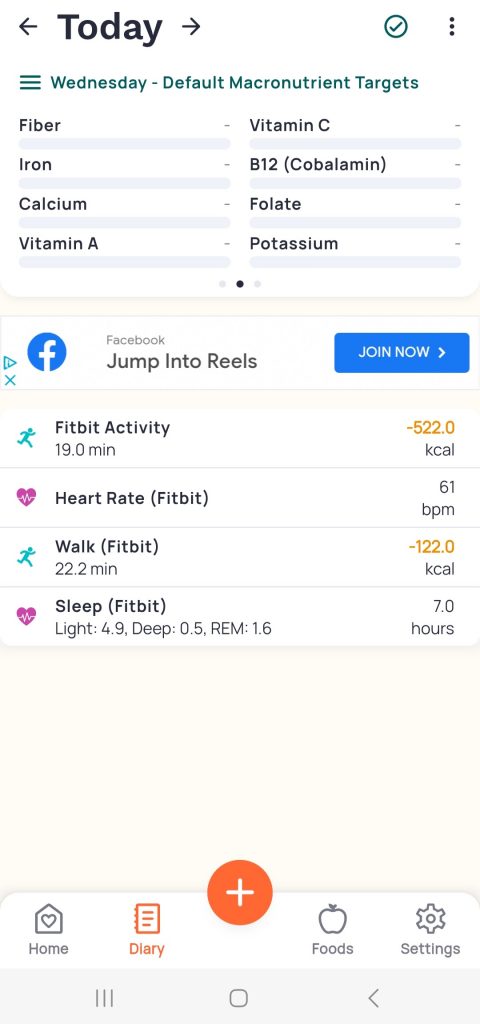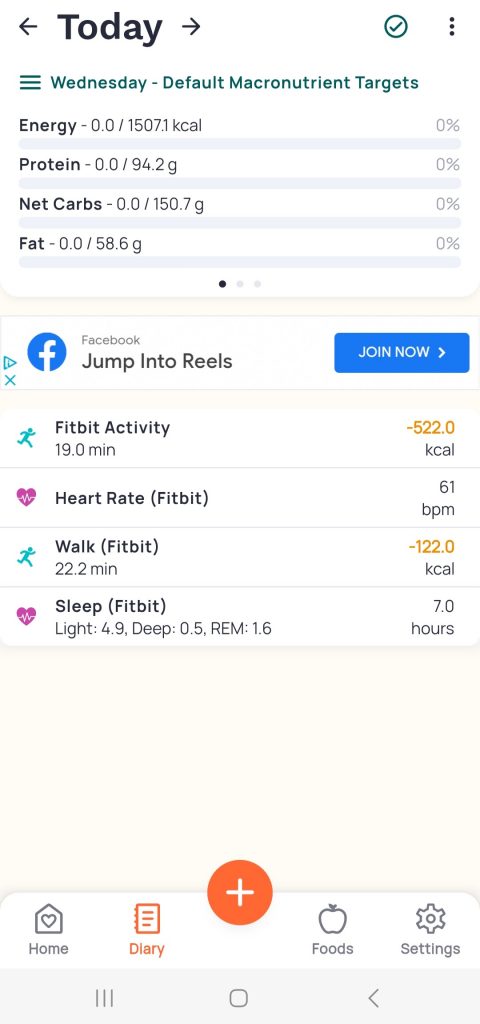The goal with technology enabled nutrition apps and devices, is to find the ones that improve the quality of life: (reduced pain, improved resilience),at the lowest cost and least effort or provide a “hack” to get the desired improvement quicker. In this blog I will review which ones may be better for chronic pain based on the science behind them and any alignment to medical studies on chronic pain and/or fibromyalgia. Topics covered are: sugar reduction/elimination, glucose monitoring devices, micronutrients and software apps.
“The doctor of the future will no longer treat the human frame with drugs, but rather will cure and prevent it with nutrition.” – Thomas Edison
“Let food be thy medicine and medicine be thy food.” – Hippocrates
Disclaimer – The views expressed in this blog belong solely to the author and do not provide health care advice. Always seek the advice of your physician or other qualified health provider with any questions you may have regarding a medical condition. The author is not affiliated in any way with the companies and devices mentioned in this blog.
1. Sugar reduction/elimination
The American Health Association recommends:
- Women should consume no more than 6 teaspoons (25 grams or 100 calories) of added sugar a day.
- Men should consume no more than 9 teaspoons (36 grams or 150 calories) of added sugar a day.
Now let this sink in, the average adult gets about 17 teaspoons of added sugar each day!

The connection between sugar and inflammation:
Excessive added sugar consumption has been associated with both inflammation and weight gain, factors that may exacerbate chronic pain. Chronic inflammation is a recognized contributor to various chronic pain conditions such as arthritis and fibromyalgia. Reducing sugar intake is theorized to mitigate inflammation and, potentially, alleviate pain in these contexts.
The weighty relationship between sugar and obesity:
High sugar intake is intrinsically linked to obesity, a known risk factor for musculoskeletal pain and associated conditions, including Osteoarthritis. Excess body weight places undue stress on joints, leading to increased pain and discomfort. Numerous studies have established a direct correlation between heightened sugar consumption and the elevated risk of conditions like diabetes, weight gain, obesity, high blood pressure, and overall poor health.
The neurological interaction:
Emerging evidence suggests that high added sugar intake may directly affect the central nervous system, potentially influencing pain perception and sensitivity. One notable study observed an association between increased sugar consumption and non-motor symptoms, resulting in a reduced quality of life among patients with Parkinson’s disease. However, more research is needed, as genetics and lifestyle may also contribute to pain perception.
Finding Balance in Sweets:
Individuals grappling with chronic pain often turn to sugary treats for temporary relief or an energy boost. Some comfort foods are even known to provide analgesic effects and enhance pain tolerance. If you’re considering reducing your consumption of high-sugar foods, it may be easier to do so gradually. Numerous software applications exist for monitoring added sugar intake, a topic we will explore in a later section.
Swapping Sweets for Health:
The Arthritis Foundation offers a list of alternative sweeteners, such as Stevia, as viable options to curtail sugar consumption. Alternatively, natural sweeteners like berries, vanilla, and cinnamon can be incorporated into your diet. A strategic shift toward healthier food swaps is crucial. Websites such as JJVirgin or the Livestrong provide extensive resources, including wholesome recipes and substitution ideas.
2. Glucose monitoring for a deeper understanding
Sugar isn’t just sweet; it can be a rollercoaster for your blood sugar levels, impacting your immune system, disrupting insulin metabolism, and elevating stress hormones. If you’re aiming to track your glucose response to make informed dietary choices, a range of monitoring solutions awaits you, from kits to wearables, including continuous glucose monitoring (CGM) systems. However, a word of caution: if you’re diabetic or pre-diabetic, it’s imperative to seek guidance from your physician before diving into glucose monitoring.
Selecting the right monitoring tool:
For those seeking simplicity, a device, such as the Keto-Mojo (pictured below) offers a straightforward method to measure glucose and ketone levels through a simple needle prick. The cost of this device falls within the moderate range and provides valuable insights into your blood glucose and ketone trends over time. Each kit includes a needle applicator, initial needles, and measurement strips for both ketones and blood glucose.

Keto-Mojo monitor and needle applicator
Continuous Glucose Monitoring (CGM) systems offer an in-depth understanding of your body’s responses to various factors, including food, stress, exercise, and sleep. These systems typically involve applying sensors to the back of the arm, allowing for continuous tracking over a specified period. It’s worth noting that CGM often entails a monthly fee for the accompanying app and a separate cost for the CGM sensors themselves.
For those interested in CGM, companies like Levels and Nutrisense offer monitoring systems tailored for making better food choices. These systems can be helpful in understanding the relationship between your diet, lifestyle, blood sugar levels, and pain management.

In summary, glucose monitoring is a tool that can be used for understanding the role of food and sugar for your health and wellness. Whether you opt for a simple glucose and ketone measurement device like Keto-Mojo or venture into the realm of Continuous Glucose Monitoring, these tools can empower you with insights into your body’s responses, guiding you towards more informed choices for pain management, weight management, and overall well-being.
3. Micronutrients
Recent studies have shone a spotlight on the remarkable connection between what you eat and chronic pain relief.
“Seven out of nine experimental studies reported a pain-relieving effect of dietary changes. Additionally, protein, fat, and sugar intake were found to be associated with pain intensity and pain threshold. In conclusion, plant-based diets might have pain relieving effects on chronic musculoskeletal pain.” Omer Elma, et. al.


It’s an interesting journey on how plant-based diets might be your secret weapon against chronic pain. A balanced diet that includes a variety of vitamins and minerals is essential for overall health. It’s generally recommended to maintain a healthy and balanced diet, which can help support the immune system. A good example was the recommendation for increasing vitamin D, C, and Zinc for improving the immune system for dealing with COVID during the pandemic.
A caution with high doses: it’s important to note that taking excessive doses of vitamins and supplements can be harmful. More is not always better, and megadoses of certain vitamins and minerals can lead to adverse effects. Consult a Healthcare Professional before taking any supplements or making significant changes to your diet, especially if you have underlying health conditions or are taking other medications.
The soil’s decline:
The nutritional value of our food has been on a steady decline due to soil depletion over the decades. Blame it on overuse and insufficient soil stewardship. This can be mitigated by buying more selectively, opting for local farmers markets, or growing your own. When it comes to fruit and veggies with delicate, edible skins like grapes and tomatoes, lean towards the organic options. To boost your intake of healthy fruits and vegetables, try juicing daily. Spinach, chard, apples, celery, beetroot, and parsley are staples for juicing.
Micro vs. macro: the app advantage:
Enter the world of nutrition tracking apps, your helpful tool on this journey. While many apps focus on macronutrients and calorie counting, the real treasure lies in tracking micronutrients. Since pain has been linked to vitamins and minerals deficiencies as noted previously, it is preferred to obtain the recommended amount of micronutrients from food before supplementation.
Explore apps like My Fitness Pal, Cronometer, and Wholesome, as these are some of the more popular apps that do track micronutrient intake. I have been using Cronometer off and on for a few years now. The app has a daily summary for the basic micronutrients consumed for the free service (with ads). Added features require a subscription service. This mixed model is common with the different apps.
Cronometer is easy to use and you can scan the barcode or look up from a very extensive database the food you are consuming. It stores your recent additions to the list which makes it easier to update for the day. I found it surprising how challenging it was to meet my daily micronutrient targets from food.


Cronometer daily screen (left) for adding food and other tracking information
In conclusion
A well balanced primarily plant based diet full of vitamins and minerals, is a great foundation for chronic pain management. If you take away anything from this blog is to minimize sugar and make sure you are eating dark leafy greens like spinach and berries every day. (They go great together in Smoothies!)



